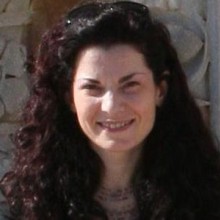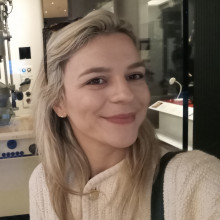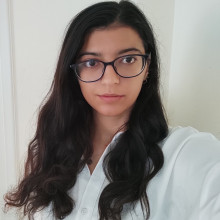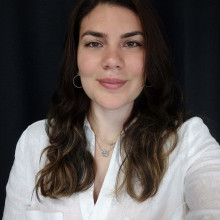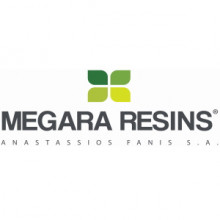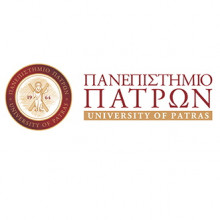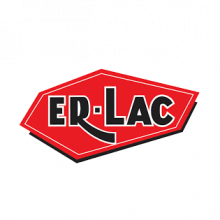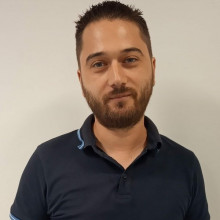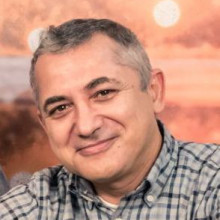SELFNANOPUD aims at developing a new technology for the production of waterborne polyurethane dispersions for the creation of a new generation of coatings with self-healing properties. The design, synthesis and characterization of the innovative dispersions and their coatings will be realized, as well as the optimization of their properties and the scaling-up of their production at semi-industrial scale.
In recent years, self-healing coatings have been the subject of increasing research interest. The ability of such coatings to self-repair local damages caused by external forces is an important factor which contributes to their attractiveness and increasing demand. The process of self-healing of polymers is based on the dispersion of a catalyst and monomer-containing microcapsules into the polymeric matrix. Sufficiently large external stresses cause rupture of the microcapsules, releasing the monomer which diffuses through the polymer and eventually reaches a catalyst particle, causing the start of the polymerization reaction. The size and mechanical characteristics of the microcapsules constitute critical elements in controlling the self-healing process.
The successful implementation of the project will contribute to the replacement of solvent based with water based products with significant positive implications on the competitiveness and improvements in the production processes in terms of compliance with the environmental and technological requirements.
The main target of SELFNANOPUD is the synthesis of innovative waterborne polyurethane dispersions for the development of coatings with self-healing properties and increased resistance in corrosive conditions of various environments. This will be achieved through a series of individual goals as:
- Synthesis and characterization of waterborne polyurethane and modified hybrid dispersions based on the pre-polymer method.
- Synthesis and characterization of dispersions that will contain isophorone diisocyanate (IPDI) in micro/nano polyurethane capsules that will possess self-healing properties.
- Development of alternative materials with potential self-healing properties through the design and the synthesis of cross linkable surface functionalized copolymer nanoparticles and their subsequent incorporation into the polyurethane dispersions.
- Characterization of the developed polyurethane dispersions, the micro/nanostructures and the final coatings with regard to their morphology, their film forming properties, their surface, thermal, mechanical, chemical as well as their self-healing properties.
- Production in semi-industrial scale of the optimum dispersions and coatings.
Principal Investigator
Scientific Staff
Research Associates
Students
Alumni
Funding

POLYGRAPH aims in developing innovative polymer nanohybrids that consist of graphite oxide (GO) and / or nanoadditives based on graphene. It targets the correlation of the final macroscopic (thermal, mechanical, rheological) properties of the nanohybrids with the microscopic structure, the morhology and the chain conformations in systems with different polymer / surface interactions and / or different degree of chain confinement.
POLYGRAPH will utilize a combined experimental and computational approach for the development of innovative of nanocomposites that consist of polymers of different architectures and functional groups and graphitic nanoadditives of different degree of oxidation in an attempt to vary the polymer / surface interactions. The successful implementation of POLYGRAPH will lead to the:
- Synthesis and characterization of graphite oxide of different degree of oxidation.
- Development of polymer nanohybrids with either intercalated or exfoliated structure.
- Investigation of polymer crystallization close to the graphitic surfaces.
- Investigation of chain conformations under confinement.
- Correlation of the macroscopic properties with the interfacial interactions and the different structure of the nanohybrids.
Principal Investigator
Research Associates
Alumni
External Personnel
Funding

Position Description
Κωδικός θέσης 3
Ανάπτυξη οπτικής διάταξης κατεργασίας οφθαλμικών φακών με λέιζερ
Κωδικός θέσης 4α
Μη γραμμική μικροσκοπία κρυσταλλικών υλικών
Για το πλήρες κείμενο της πρόσκλησης ακολουθήστε τον σύνδεσμο "Related Documents", αριστερά
Related Project
ΕΟΦ -Required Qualifications
Κωδικός θέσης 3
- Πτυχίο Θετικών Επιστημών
- Μεταπτυχιακός Τίτλος (MSc) στην Επιστήμη Υλικών
- Εμπειρία στην ανάπτυξη οπτικών διατάξεων
- Καλή γνώση της Αγγλικής γλώσσας (Επίπεδο Lower)
Κωδικός θέσης 4α
- Πτυχίο Θετικών Επιστημών
- Μεταπτυχιακός Τίτλος (MSc) Θετικών Επιστημών
- Δημοσιεύσεις σχετικές με το αντικείμενο της θέσης
- Καλή γνώση της Αγγλικής γλώσσας (επίπεδο Lower)
Application Procedure
Στο φάκελο υποβολής της πρότασης θα πρέπει να εμπεριέχονται τα ακόλουθα:
- Αίτηση (Form Greek στην αριστερή στήλη) με αναφορά στον κωδικό της θέσης (3 ή 4α) και στο όνομα του προγράμματος
- Αναλυτικό Βιογραφικό Σημείωμα
- Ευκρινή φωτοαντίγραφα τίτλων σπουδών
- Βεβαίωση σπουδών υποψήφιου διδάκτορα
Appointment Duration
6 μήνεςFunding

Position Description
Atomic scale calculations of graphene and TMD based 2D-materials nanostructure properties.
For the full announcement, follow the link "Related Documents"
Required Qualifications
- BSc in Physical or Materials Sciences (30%)
- MSc in Materials Sciences (30%)
- Experience in computer programming for quantum mechanical calculations and materials simulations (30%)
Desirable Qualifications
- Knowledge of the English language (10%)
Application Procedure
In order to be considered, the application must include:
- Completed application Form (Download link to the left)
- Brief CV
- Scanned copies of academic titles
- University department certificate for enrollment in a PhD program
Please send your application and all documents to: hr@iesl.forth.gr and cc the Scientific supervisor marked in the left column
Appointment Duration
10 monthsPosition Description
Ο/Η υποψήφιος/α αναμένεται να συμβάλει στην πραγματοποίηση μη γραμμικών απεικονιστικών μετρήσεων για την απόκτηση καινοτόμων πληροφοριών που σχετίζονται με θεμελιώδεις βιολογικές διεργασίες και βασικά υποκυτταρικά χαρακτηριστικά βιολογικών δειγμάτων.
Για το πλήρες κείμενο της πρόσκλησης ακολουθήστε τον σύνδεσμο "Related Documents", αριστερά
Required Qualifications
- Πτυχίο Θετικών Επιστημών
- Μεταπτυχιακό Δίπλωμα Ειδίκευσης (MSc) από Ανώτατο Εκπαιδευτικό Ίδρυμα της ημεδαπής ή αλλοδαπής σχετικό με εφαρμογή φασματοσκοπικών τεχνικών στην Βιολογία
- Εμπειρία σε απεικόνιση βιολογικών δειγμάτων με χρήση υπέρστενων παλμών λέιζερ
- Επιστημονικές δημοσιεύσεις, παρουσιάσεις σε διεθνή συνέδρια
Desirable Qualifications
- Εμπειρία σε ανάπτυξη και αναβάθμιση πρότυπων πειραματικών διατάξεων για απεικόνιση βιολογικών δειγμάτων σε μικροσκοπικό επίπεδο
- Γνώση Αγγλικής γλώσσας
Application Procedure
Στο φάκελο υποβολής της πρότασης κάθε ενδιαφερόμενου θα πρέπει να εμπεριέχονται τα ακόλουθα:
- Αίτηση (Form Greek στην αριστερή στήλη) με αναφορά στον κωδικό της θέσης 51α και στο πρόγραμμα
- Αναλυτικό Βιογραφικό Σημείωμα
- Ευκρινή φωτοαντίγραφα τίτλων σπουδών
- Πρόσφατη βεβαίωση σπουδών υποψήφιου διδάκτορα
Appointment Duration
4 μήνεςPosition Description
Παραγωγή & χαρακτηρισμός υβριδικών υδρογελών πεπτιδίων-πορφυρίνης για χρήση σε βιοϊατρικές εφαρμογές (ΕΕ 2). Το βασικό δομικό πλαίσιο θα αποτελείται από διπεπτίδια είτε αρωματικών αμινοξέων (διφαινυλαλανίνης) είτε αλειφατικών αμινοξέων (αλανίνης-ισολευκίνης). Ο υποψήφιος/α θα μελετήσει την αυτοοργάνωση των πεπτιδικών δομικών λίθων με τεχνικές Ηλεκτρονικής Μικροσκοπίας Διέλευσης (TEM), Ηλεκτρονικής Μικροσκοπίας Σάρωσης (SEM) η/και περίθλαση ινών. Θα εξεταστεί η επίδραση διαφόρων παραγόντων ως προς τον σχηματισμό υδρογελών (διαλύτες, θερμοκρασία και συγκέντρωση) και θα μελετηθεί η ελεγχόμενη αποδέσμευση εγκαψυλιωμένων πορφυρινών.
Για το πλήρες κείμενο της πρόσκλησης ακολουθήστε τον σύνδεσμο "Related Documents", αριστερά
Required Qualifications
- Πτυχίο Χημείας/Βιολογίας/Επιστήμης Υλικών ή συναφές
- Διδακτορικό Δίπλωμα σε συναφή πεδία
- Εμπειρία με παραγωγή και μελέτη πρωτεϊνών και πεπτιδίων
- Δημοσιεύσεις σε έγκυρα επιστημονικά περιοδικά με κριτές
- Άριστη γνώση της Αγγλικής γλώσσας
Application Procedure
Στο φάκελο υποβολής της πρότασης θα πρέπει να εμπεριέχονται τα ακόλουθα:
- Αίτηση (Form Greek στην αριστερή στήλη) με αναφορά στον κωδικό της θέσης 6γ και στο όνομα του προγράμματος
- Αναλυτικό Βιογραφικό Σημείωμα
- Ευκρινή φωτοαντίγραφα τίτλων σπουδών




